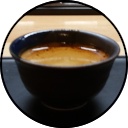Mixing Water How-To Guide
This is a post to accompany a new how-to guide for mixing brewing water. To check out the guide itself, click the heading above or here.

Why?
My first exposures to mixing brew water, as opposed to buying Poland Springs bottled water or running tap water through a regular old water filter, were Third Wave Water and the BaristaHustle The World in Two Bottles guide.
Both were a great help in getting started mixing water, the BaristaHustle guide especially. A big thanks to their team for putting it out there, it’s helped me and countless others. But there were always some small issues I had with them.
The premixed solutions are on the expensive side. Not prohibitively so, especially for comparing to your regular water, but enough I wasn’t fond of using it daily. The BaristaHustle recipes are great and inexpensive, but aren’t as user friendly as I’d like. They express the concentration of minerals as ion rather than as CaCO3, which, while a perfectly legitimate way to express hardness, makes it difficult to double check your work with a TDS meter. Having to weigh out water such that the total of water and concentrates weighed a liter is also a mild annoyance to me, I prefer to just take the full gallon jug and dump everything I need in.
So when a friend of mine and fellow coffee enthusiast Alex introduced me to his concentrates, I was quite interested. Alex’s recipes are formulated in liter and gallon versions, each designed so that adding 1ml of concentrate to the full volume it’s intended for will raise the hardness, expressed as CaCO3, by 10ppm.
This does a few things for me. It makes it easy to mix a full gallon of water, it makes it easy to check I did everything right with a standard TDS meter, and it makes it easy to experiment with my own recipes with only the most basic of mental math. There are even some more powerful ways you can use them too, which you’ll see in the guide, which you should check out now.
